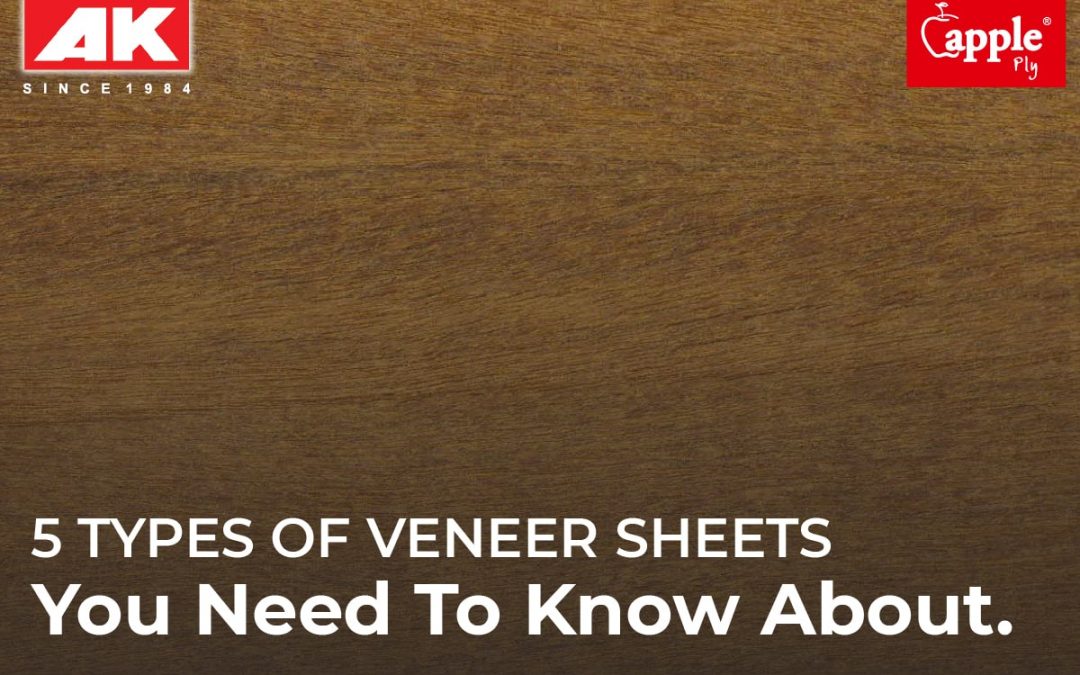What Is a Veneer Sheet?
The term veneer refers to a very thin layer/sheet laid on top of a solid substance in order to create a better, attractive appearance. There are several types of veneer sheets and each one has a unique property of its own.
It is also important to understand the distinction between veneer sheets and laminates. Laminates are typically made of a synthetic material that gives the wood a lustrous sheen while imitating wood grain. Veneers are the real deal, and they require more upkeep than laminates, since they must be polished on a regular basis. Despite being slightly more expensive than laminates, they work well as statement pieces that enhance the aesthetic value of the furniture.
There are several types of veneers based on different classifications that you can choose from. Having said that, here are 5 types of veneers you need to know about from different classifications.
5 Types of Veneer Sheets That Are Overlooked
- Paper-backed veneer
Classified based on the material used for backing, it is a real wood veneer sheet that is permanently glued to a paper backing. Multiple veneers are bonded together side by side to make a four-foot-wide paper-backed veneer.
This backing is used to keep the individual wood veneers that make up the sheet’s whole length intact. Changes in humidity levels usually induce seasonal expansion and contraction of the wood, which is minimized by the paper backing.
- Rotary-cut veneer
Classified based on the method used to cut veneers, the rotary cut veneer is made by turning a log and shaving the veneer as it turns. The method of peeling the entire length is known as rotary. These veneers have a broad grain pattern rather than a basic sliced or quartered appearance.
This is the only way of cutting that can produce whole-piece face veneers. This method also produces the most veneer per log while also being less expensive than sliced veneer.
- Book match veneer
It is a classification based on matching. When the veneer joints are perfectly aligned and generate a mirrored image pattern at the joint line, ensuring optimum grain continuity, it is called a book-match veneer. Every other piece of veneer is turned over, and adjacent pieces are opened in the same way that adjacent pages in a book are opened. This design is typically the most appealing to the eye, since it gives maximum continuity of the grain.
- Plywood veneer
Classified based on the kind of wood used, plywood veneer is a type of engineered wood that can be utilized in a variety of projects. With improved dimensional stability and strength, it is mostly used for panel building.
- Burl veneer
Classified based on grain, burl veneer is manufactured from irregular growths in knots or stumps at a tree’s base. It comes in unique patterns and shapes making it perfect for furniture and interior designs. Filler or plugs are frequently used in burl wood to fill holes that appear naturally in the wood. It will also have seams going in both directions when built into larger sections.
In conclusion, veneer sheets are available in a variety of options. They are built from different types of wood, using different processes to get the desired shape and structure; and are even backed with different materials to provide distinct properties. If you are looking for a specific veneer sheet that will fit your project needs, reach out to us. AK group’s Apple plywood will help you find the perfect sheet for your upcoming project. From burl veneers to teak wood veneers, we’ve got them all!



